Malocclusion problems not only affect facial aesthetics but also hinder chewing function and can even lead to serious oral diseases. Therefore, many people have sought and chosen orthodontic treatment for malocclusion as an effective solution. So, what is the optimal method for malocclusion bracing and what is the cost? Let’s explore the details with My Auris Dental now to get useful information for your oral care!
What is Malocclusion? Common Types of Malocclusion Today
Malocclusion is an imbalance between the two dental arches, preventing them from biting together properly or chewing normally. In addition to reducing aesthetics and causing a loss of facial harmony, this condition also affects chewing function, speech, and can eventually lead to temporomandibular joint disorders.

From a dental perspective, types of malocclusion are usually classified by the degree and morphology of the dento-skeletal structure as follows:
Overbite (also known as protruding teeth)
In this type, the upper teeth protrude forward, covering the lower jaw, which, when viewed from the side, makes the nose appear slightly sunken, the mouth pointed, and the lips prominent. The cause can be dental misalignment or jaw bone misalignment. This is one of the most common conditions today.
Underbite
Also known as reverse overjet or prognathism, it occurs when the lower jaw bone develops excessively while the upper jaw bone is underdeveloped. As a result, the upper teeth are hidden, the chin protrudes, making the overall facial appearance noticeably imbalanced.
Edge-to-Edge Bite
This type of misalignment occurs when the front teeth of both jaws only meet at their edges, while the inner teeth do not touch. Individuals with this condition often experience difficulty chewing and must exert more force when biting food.
Open Bite
Considered one of the serious types of malocclusion, it is characterized by the front teeth of both jaws not touching, creating a large gap. When at rest, the tongue may be visible through the gap between the two jaws. This significantly affects speech and aesthetics.
Deep Bite
In this case, the upper teeth completely overlap the lower jaw, with the incisal edges of the lower teeth touching the gum tissue behind the upper teeth. In the long run, individuals with a deep bite are prone to temporomandibular joint inflammation, causing pain and difficulty in opening the mouth.
Crossbite
This is a condition where teeth are uneven and misaligned, causing an overall imbalance and lack of harmony in the dental arch. This condition not only leads to aesthetic issues but also easily results in uneven tooth enamel wear and masticatory dysfunction.

How is Malocclusion Treated?
The treatment of malocclusion depends heavily on each patient’s condition. Therefore, an examination and assessment by a specialist dentist are necessary to accurately determine the cause and select the appropriate malocclusion treatment method. Below are some popular solutions currently applied:
Aesthetic Braces
This is an effective and widely applied method for tooth alignment and bite correction. Specifically, traditional braces use the force of brackets to move teeth into the desired position. This method is recommended by many dentists for its effectiveness and safety, especially suitable for misalignments caused by dental issues.
Jaw Surgery
For cases of malocclusion caused by jaw bone issues, only jaw surgery provides the highest effectiveness. Depending on the patient’s specific defect, the doctor may remove a portion of the bone or add bone to balance the bite. This is considered the most comprehensive method for skeletal malocclusion cases.
Aesthetic Porcelain Crowns
In situations of mild malocclusion not caused by jaw bone issues, aesthetic porcelain crowns are a quick and suitable solution. This method effectively restores teeth with a fast treatment time, especially for those who need aesthetic improvement in a short period.
Popular Malocclusion Bracing Methods Today
Orthodontic treatment for malocclusion is a modern dental technique that uses specialized appliances to adjust teeth and correct the bite to the desired position. The goal is to create a more even and balanced dental arch, improving chewing function and facial aesthetics. With advancements in dentistry, various orthodontic methods are now available, allowing patients to choose the most suitable option based on their dental condition and personal needs.
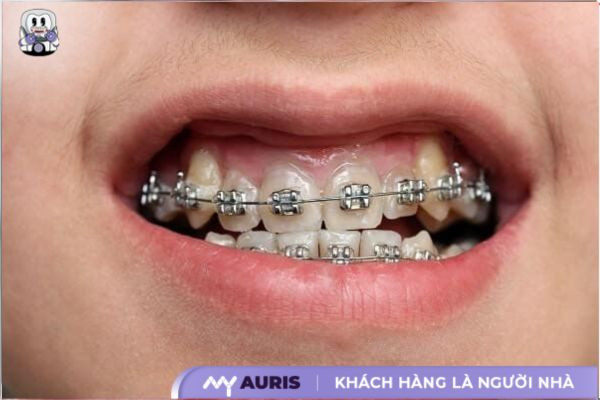
Metal Braces
As one of the traditional orthodontic methods, metal braces are favored by many for their effective ability to correct malocclusion. This type of appliance is highly durable, can withstand significant pulling forces, and is not easily dislodged or broken during treatment. The relatively low cost makes it suitable for the majority of orthodontic patients.
A major advantage is that the teeth usually align to their correct position faster, as the brackets are less prone to breaking or coming loose. However, the aesthetic appeal is lower due to the visible metal when smiling. Additionally, the metal material can cause gum irritation or cheek irritation in some individuals.
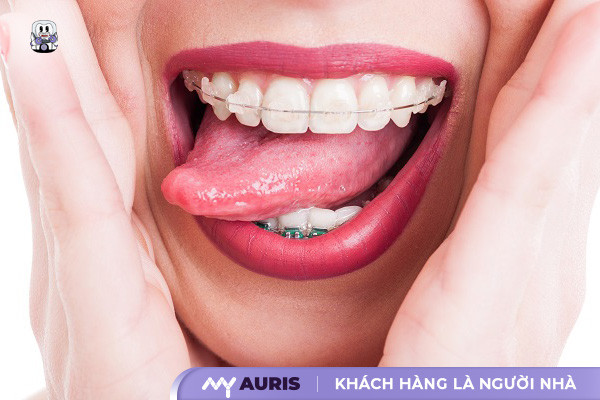
Ceramic Brackets
Ceramic braces are becoming a trend due to their superior aesthetic improvement. The brackets are attached to the front surface of the teeth, but with a color similar to natural teeth, they are difficult to notice from a distance, making them suitable for adults or those in professions requiring frequent communication.
However, they are more expensive than metal braces, the orthodontic treatment time can be longer, and the bracket bases are prone to staining if not cleaned properly.
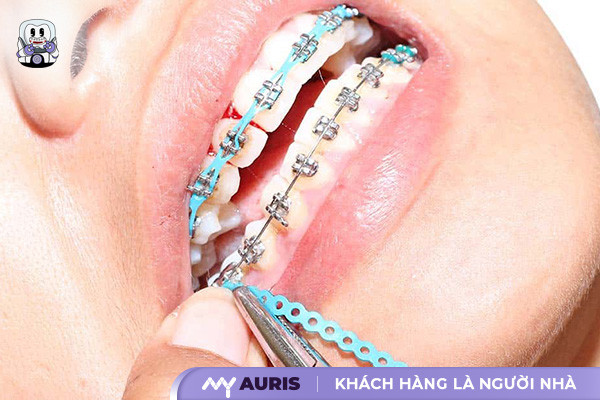
Self-Ligating Braces
This method uses a sliding cap system to replace traditional elastic ligatures, which helps hold the archwire more effectively within the bracket. The self-ligating design increases retention, securely holding the archwire in the slot, thereby reducing the time wearing braces and eliminating the need for frequent wire adjustments.
Disadvantages include their larger thickness, which can cause discomfort for the user, and a higher cost compared to traditional braces.
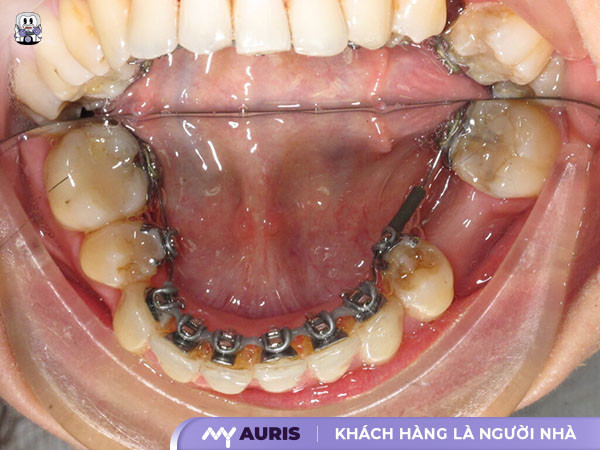
Lingual Braces
This is an orthodontic method where the brackets are bonded to the inner surface of the teeth, making them completely invisible from the outside. This offers high aesthetic value, as wearers do not have to worry about others noticing them.
However, lingual braces can easily cause discomfort to the tongue, especially during the initial period after placement.
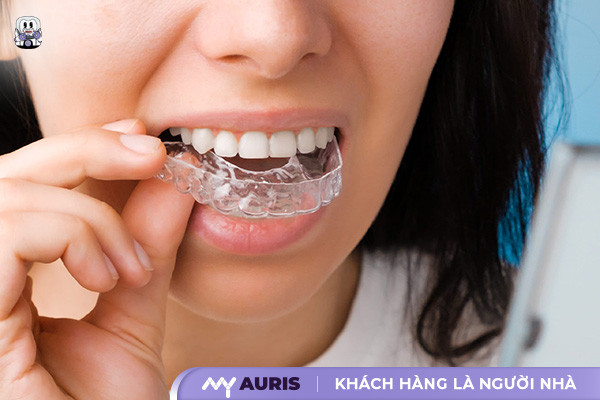
Clear Aligners (Invisible Braces)
Also known as “braceless orthodontics,” this is an advanced orthodontic method that uses removable clear aligner trays made from transparent material. Users can easily remove and reinsert them for eating and daily activities, making oral hygiene simple, and entirely eliminating the need for traditional braces or brackets.
However, this is also the most expensive method, suitable for those who desire discreet, convenient, and highly aesthetic orthodontic treatment.
How Long Does Malocclusion Bracing Take?
The duration of malocclusion bracing largely depends on the severity of the malocclusion and the patient’s cooperation during treatment. For mild to moderate malocclusion cases, the treatment can be completed within approximately 6 months to 1.5 years.
However, if you have complex malocclusion cases such as severe overbite, severe underbite, or severely misaligned teeth, the bracing period may extend, ranging from 2 to 3 years.
The good news is that the malocclusion bracing time can be shortened if the patient maintains proper oral hygiene and strictly adheres to the specialist’s instructions. This is a crucial factor in optimizing treatment effectiveness and minimizing complications during the orthodontic process.
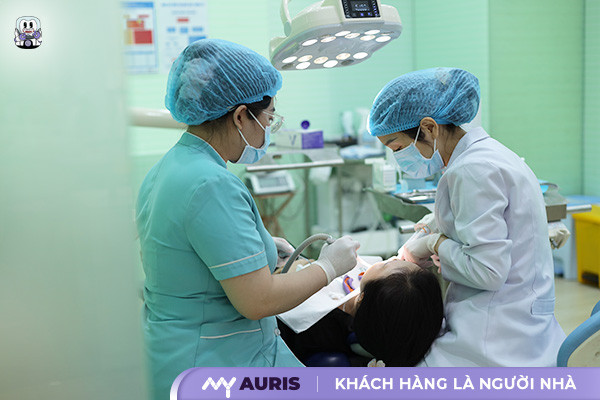
How Much Does Malocclusion Bracing Cost?
The cost of malocclusion bracing varies for each individual, depending on the severity of their malocclusion. Currently, traditional braces prices range from 45-65 million VND, while Invisalign clear aligners average 55-145 million VND, depending on the type of aligner and the extent of orthodontic correction needed.
If you have existing oral health issues, the dentist will thoroughly treat these conditions before proceeding with the orthodontic process. In such cases, it is entirely possible for the cost of malocclusion bracing to increase.
Furthermore, the total cost also depends on many factors such as the dentist’s skill, their expertise, service quality, the materials used to create orthodontic appliances, and the modern technology applied at the dental clinic. Therefore, choosing a reputable dental clinic for safe examination and a proper treatment plan is crucial to ensure safe and effective orthodontic results as expected.
Latest Crossbite Bracing Cost
Are you wondering about the cost of crossbite braces? In reality, the exact cost of crossbite treatment depends on various factors such as the type of braces chosen and each individual’s dental condition. For severe crossbite cases requiring additional auxiliary appliances, the treatment cost will be higher compared to those with mild crossbite.
To get a specific figure, you should visit a reputable dental facility like MY Auris Dental for a direct in-mouth assessment by a doctor and a cone-beam CT scan. This will allow for a suitable treatment plan and a detailed quotation. This is an important step to ensure treatment effectiveness while optimizing long-term costs.
Below is the price list for braces at a dental clinic in Ho Chi Minh City – one of the leading addresses for orthodontic technology in HCMC today:
| Type of Braces | Listed Price (2 arches) | Promotional Price (2 arches) |
| Metal Braces with Elastic Ligatures | 28,000,000 VND | 25,000,000 VND |
| Smart Self-Ligating Braces | 33,000,000 VND | 30,000,000 VND |
| Pitts Braces | 39,000,000 VND | 35,000,000 VND |
| Aesthetic Ceramic Braces | 45,000,000 VND | 40,000,000 VND |
| Smart Aesthetic Ceramic Braces | 50,000,000 VND | 45,000,000 VND |
| Lingual Braces | 65,000,000 VND | 50,000,000 VND |
| OrthoClassic Braces – USA | 23,000,000 VND | 20,000,000 VND |
| Invisalign Clear Aligners | 50,000,000 – 140,000,000 VND | 25,000,000 VND – 87,000,000 VND |





